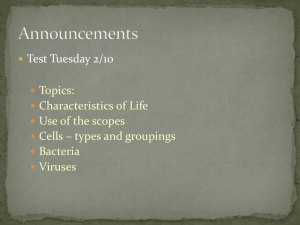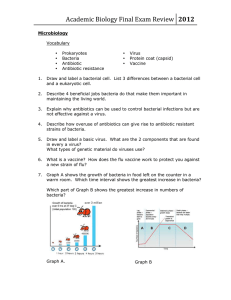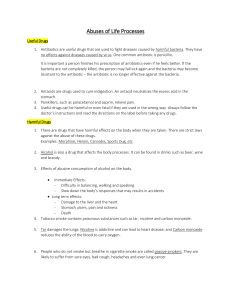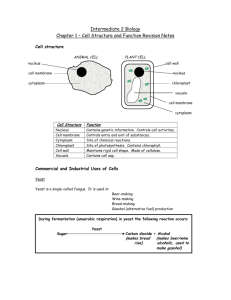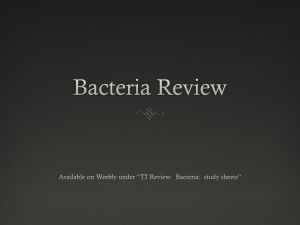Understanding Bacteria: Worksheet & Key Concepts
advertisement
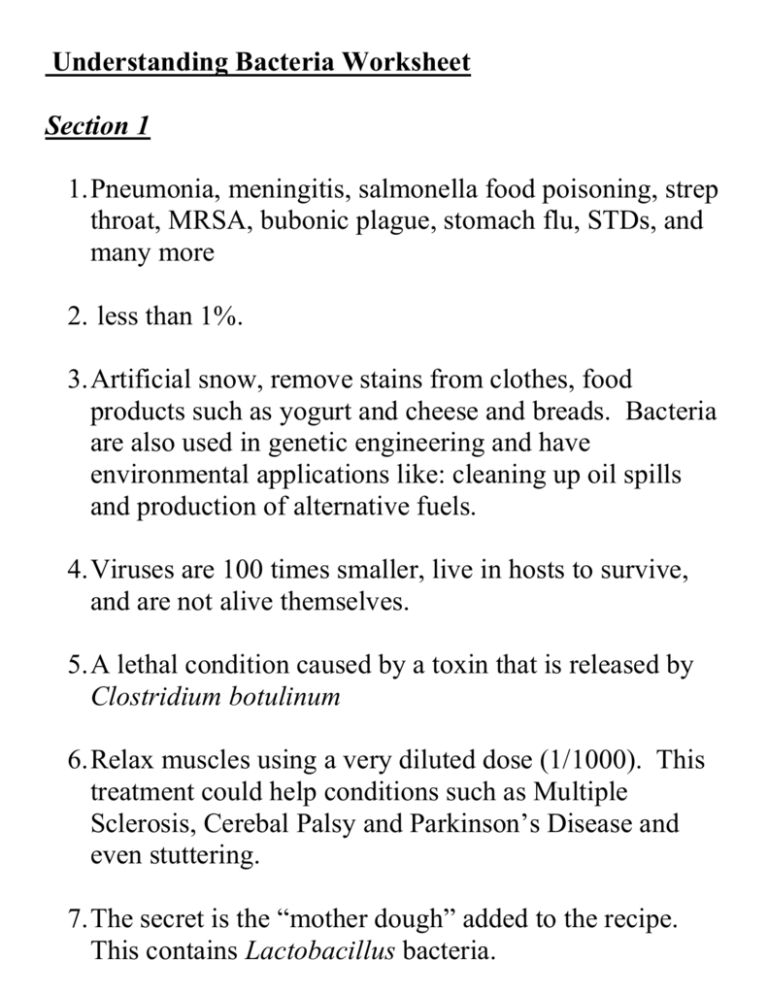
Understanding Bacteria Worksheet Section 1 1. Pneumonia, meningitis, salmonella food poisoning, strep throat, MRSA, bubonic plague, stomach flu, STDs, and many more 2. less than 1%. 3. Artificial snow, remove stains from clothes, food products such as yogurt and cheese and breads. Bacteria are also used in genetic engineering and have environmental applications like: cleaning up oil spills and production of alternative fuels. 4. Viruses are 100 times smaller, live in hosts to survive, and are not alive themselves. 5. A lethal condition caused by a toxin that is released by Clostridium botulinum 6. Relax muscles using a very diluted dose (1/1000). This treatment could help conditions such as Multiple Sclerosis, Cerebal Palsy and Parkinson’s Disease and even stuttering. 7. The secret is the “mother dough” added to the recipe. This contains Lactobacillus bacteria. 8. Several people died and more became sick. Undercooked hamburgers having Escherischia coli was the cause. 9. The antibiotic known as Penicillin was harvested from a bread mold by Alexander Flemming in 1928. 10. Bacteria exchange plasmids with each other. These plasmids have bits and pieces of DNA they incorporate into their everyday lives to help adapt to changes in their environment. Section 2 1. To promote growth. Less energy has to be devoted to fighting off germs and more can be applied to growing. 2. By doing so you select for antibiotic resistant strains of the organism. It may also give other organisms an opportunity to invade they might not otherwise have. 3. They used Pseudomonas bacteria to “eat” cyanide (a poison), by breaking the compound apart. 4. To understand the genes responsible for growth and disease, we can fight them. From understanding comes new products such as antibiotics, vaccines and industrial uses. 5. Bacteria can whiten paper and reduce the need for chlorine, which pollutes fresh water supplies. Some other points of interest to consider….. - Hospitals are good for treating injuries and immediate problems but are not good places to heal. - Antibiotics can cause harm to organs while they are trying to kill the what is making you sick. - Airplanes are disease factories, so take certain precautions: wear a face mask, boost vitamin C, keep well hydrated, ask to move to a different seat. - “Rub a little dirt on it”

